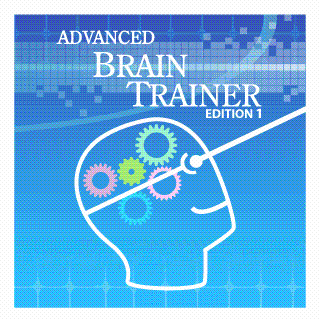
When it comes to physical fitness, the options available for developing ourselves are legion. We can choose from aerobics, weight training, jogging, yogathe list goes on and on. Oddly, when it comes to enhancing mental fitness, suggesting a similar developmental approach of progressive conditioning courts skepticism. But since the Nineties, a number of researchers have argued that a systematic program of brain exercise can enhance mental performance in the manner that aerobics enhances physical performance. In Japan, Dr. Ryuta Kawashima hit a nerve with an exposition of this theory in his bestselling book, Train Your Brain: 60 Days to a Better Brain. Nintendo productized the books concepts and content into Brain Age, a blockbuster series of training games for the Nintendo DS and the Wii.
A game along similar lines is hard to find for the Palm platform. One prospect I reviewed a couple of weeks ago was Handcases game suite, Brain Hand, which left me nonplussed by the poorly translated English captions and instructions. While its games could be described as brain ticklers, they didnt take the progressive grading approach that characterizes Brain Age as a training tool.
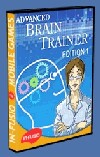
Much closer to Brain Ages methodologies is In-Fusios Advanced Brain Trainer, a series currently comprised of two editions, available for Windows Mobile, Blackberry, Symbian/Series 60 and Palm OS. Lets take a look at Edition 1 for POS.
Getting Started
You can test drive Advanced Brain Trainer by downloading the demo version, which has a 1-exam trial limit. As with most demos, Id strongly prefer a version whose only limit is a fixed number of days. Limiting this game to one exam leaves much of the content unexplored: two of the five games, one of the coaches, and one of the playing modes.
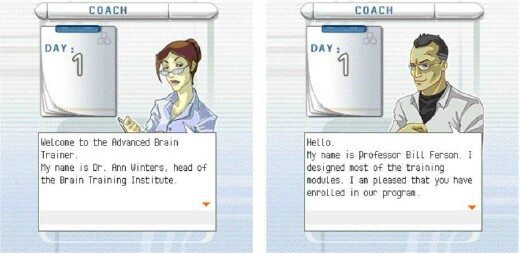
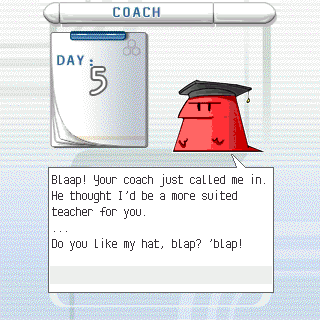
The game begins with the two main coaches introducing themselves. A severe-looking Dr. Ann Winters starts things off by distinguishing her coaching style from that of her colleague, Dr. Bill Ferson. Some trainees prefer of more lenient approach. I demand discipline. Players get to choose between the two. While I appreciated the role reversal from the stereotypical nurturing female and analytical male, I opted for low maintenance, choosing Dr. Bill for the rest of the ride. Bills idea of lenient is whining, Im disappointed when you score low, where Ann would bark, This is terrible!
After several exams, another avatar is unlocked for players to choose froma more abstract cartoon character of the Scott Adams/Matt Groening varietynamed (if memory serves) Zack. He doesnt seem to have a dominant coaching trait like Anns fastidiousness or Bills humanism, but is more no-nonsense than either.
The Exam Mode consists of five modules, three of which are unlocked during the first exams: Speed Count, Drawing Over, and Parking Check. An exam runs through each of these modules in no particular order, and players are only allowed to complete one exam per day. At the end of each exam, the coach reviews and displays the scoring with a bar graph showing players their progress (or lack thereof) from exam to exam. Coaches counsel players at the end of each review in their characteristic style, scolding if scores are lowor if a day of practice is missedand praising if scores show progress.
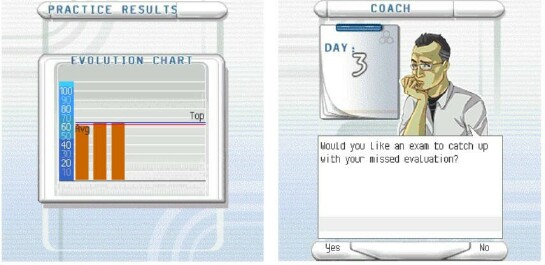
After taking an exam, further training is possible in Practice Mode, which has no limit on the number of plays of unlocked modules. But like the Exam Mode, only unlocked modules are available.
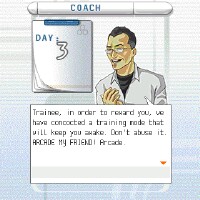
Later exams unlock an Arcade Mode, which is a middle ground between the Exam and Practice Modes. The games in this Arcade Mode are often deployed at an accelerated pace, and only allow a limited number of mistakes.
The Games
Beginning Modules
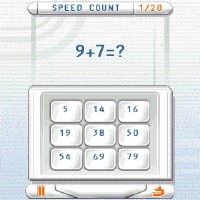
Speed Count is the least entertaining of the bunch. Like other games designed for training or education, its obvious that amusement is not Advanced Brain Trainers top priority, and certainly not with this arithmetic module. Speed Count is essentially a series of flashcards of simple problems displayed at a brisk pace for the player to answer in a closed time frame. Not original, but effective.
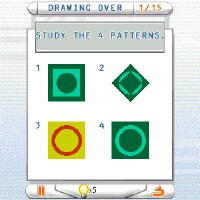
Drawing Over is a deceptively simple battery of short-term memory tests. The first screen displays a pair of 2-color shape diagrams. The second screen shows a set of four diagrams to examine, one of which properly overlays the pair from the previous screen into a single image. The third screen asks the player to identify the correct image. In practice, it often winds up being harder than it looks. I found that I tended retain the shape patterns accurately at the expense of retaining the correct color scheme, or vice versa.
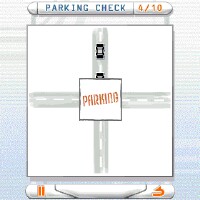
Parking Check is my favorite. This ones a cruel challenge. The first screen presents a covered parking lot at the center of four roads. At irregular intervals over a one- to two-minute session, cars enter or exit the lot from any of four directions, either individually or in convoys of up to five cars. Sometimes the entries and exits occur one at a time, sometimes simultaneously. Occasionally are car has a trailer hitched to it designed to throw off the players count. The second screen asks the player how many cars remain inside the lot.
Advanced Modules
Color Algebra gets unlocked after the third exam. It takes Speed Counts layout and bumps it up a notch with colored numerals and operators. The first screen presents a simple algebraic expression (no polynomials or functions). Some expressions feature unknowns, represented by question marks instead of variables; others are complete expressions with no unknowns. The second screen asks the player to provide the appropriate answer. If the expression in the prior screen had an unknown, the player is usually asked to provide that value. If the prior screen had a complete expression with no unknown (e.g. 5 3 > 12-6), the question is usually whether or not the expression is true or false. In less usual cases, the player is asked to recall the color assigned to a certain numeral or operator. Calculation and short-term memory are being tested simultaneously.
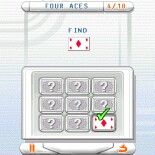
Four Aces is diabolical, unquestionably the hardest game of the bunch. The first screen displays a 3 x 3 grid of placeholders, on which up to 5 playing cards may be placed. The cards are displayed briefly, then flipped over, then slowly (or not so slowly) repositioned several times into new placeholders. On the second screen the player is asked to identify oneor a pairof the cards current placements. If youre lucky, youll get an assortment with only one card having a unique suit to track, but usually youre forced to track the movements of more than one card simultaneously. I initially thought this was impossible, but Ive been pleasantly surprised that its possible to get better at multitracking with practice.
Conclusion
Like Brain Age, or games in its tiny genre of cerebral fitness, Advanced Brain Trainers focus is on user performance, not entertainment per se. Its not as thrilling as conventional games designed expressly for fun.
For its namesake purpose, it focuses on calculation and short-term memory more than other mental faculties, like pattern recognition, lateral thinking and logical deduction. So theres room for improvement. That said, this edition does deliver the goods fabulously for the aspects of mental conditioning that it does cover. During the exams and practice sessions, you can almost feel your synapses firing to keep up. If youre looking for some intellectual stimulation with a little more variety than another round of Sudoku, Advanced Brain Trainer provides a unique set of challenges.
Ill continue the brain quest by reviewing Edition 2 of this series, so stay tuned.
|
|
| Pros |
Really provides a mental workout, as advertised
Allows player to see his or her progress, charted
Very slick presentation, with well-crafted avatars
|
|
| Cons |
Not as fun as games designed strictly for entertainment
No way to preview some modules in demo version
Emphasizes short-term memory above other mental faculties |
|